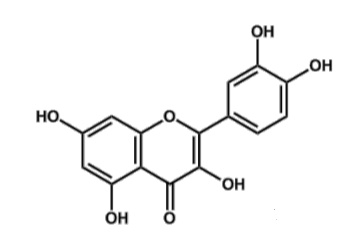
Quercetin
Details
Quercetin is a polyphenol flavonoid found in lots of plants, such as red onions, broccoli, and blueberries. The reason it is in cosmetics is that - similar to other polyphenols - it is a strong antioxidant and has anti-inflammatory properties.
Other than that, a study also showed that adding quercetin to sunscreens helped to stabilize the otherwise not very stable chemical UV filters avobenzone and octinoxate against degradation -- and it did better than traditional stabilizers like octocrylene and vitamin E!
There are also some studies into the use of quercetin as a skin whitening agent, but after some conflicting results, the conclusion is that "quercetin is not effective in cosmetic applications as a whitening ingredient". It also shows minor cytotoxicity when compared to some of its polyphenol derivatives (such as rutin), so quercetin is a good example where more is not better.
Show me some proof
- Bonina, Francesco, Maria Lanza, Lucia Montenegro, Claudio Puglisi, Antonio Tomaino, Domenico Trombetta, Francesco Castelli, and Antonella Saija. 1996. “Flavonoids as Potential Protective Agents against Photo-Oxidative Skin Damage.” International Journal of Pharmaceutics 145 (1): 87–94.
- Boots, Agnes W., Lonneke C. Wilms, Els L. R. Swennen, Jos C. S. Kleinjans, Aalt Bast, and Guido R. M. M. Haenen. 2008. “In Vitro and Ex Vivo Anti-Inflammatory Activity of Quercetin in Healthy Volunteers.” Nutrition 24 (7): 703–10.
- Choi, Moon-Hee, and Hyun-Jae Shin. 2016. “Anti-Melanogenesis Effect of Quercetin.” Cosmetics 3 (2): 18.
- Kitagawa, Shuji, Yuko Tanaka, Manami Tanaka, Kanako Endo, and Akiko Yoshii. 2009. “Enhanced Skin Delivery of Quercetin by Microemulsion.” Journal of Pharmacy and Pharmacology 61 (7): 855–60.
- Scalia, Santo, and Matteo Mezzena. 2010. “Photostabilization Effect of Quercetin on the UV Filter Combination, Butyl Methoxydibenzoylmethane–Octyl Methoxycinnamate.” Photochemistry and Photobiology 86 (2): 273–78.





